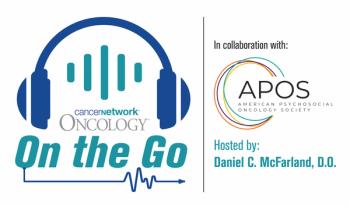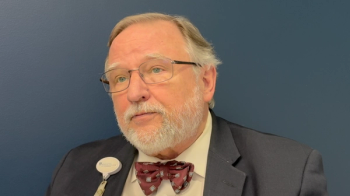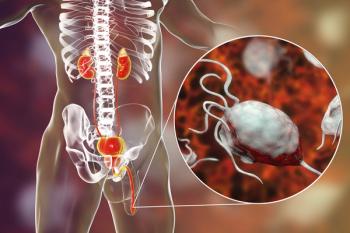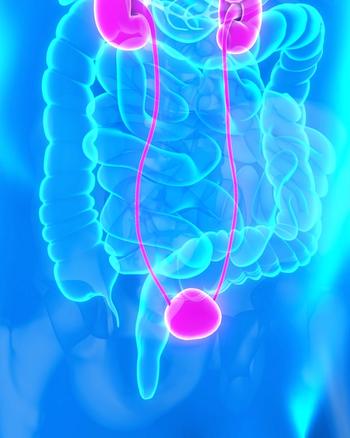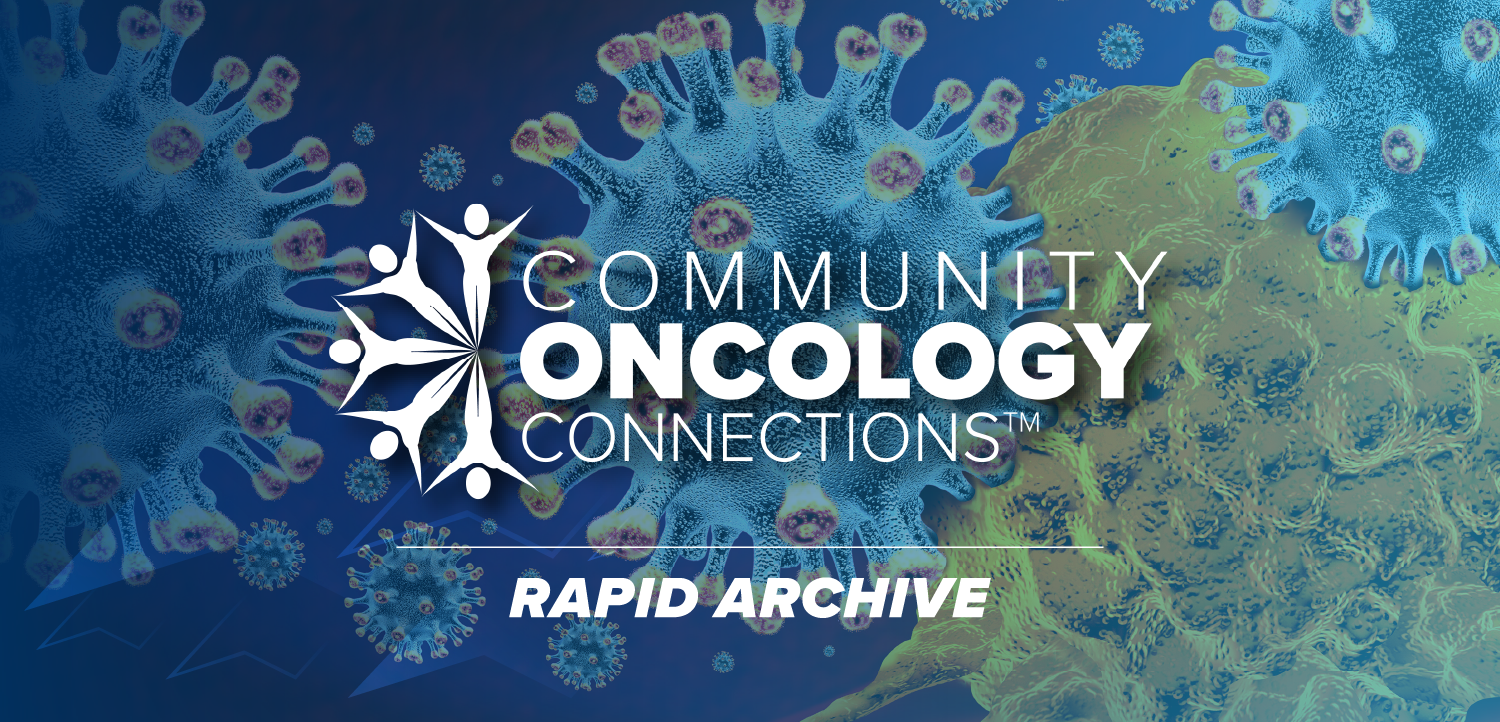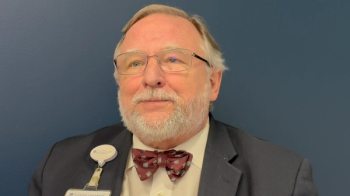
Nirogacestat Receives European Approval for Treatment of Desmoid Tumors
The EC decision is based on phase 3 DeFi trial results, in which nirogacestat met the primary end point of PFS in patients with progressing desmoid tumors.
Nirogacestat (Ogsiveo) has received marketing authorization from the European Commission (EC) for the treatment of adult patients with progressing desmoid tumors requiring systemic therapy, according to a news release from the drug’s developer, SpringWorks Therapeutics.1
The basis of the EC’s decision was data from
After a median follow-up of 15.9 months, nirogacestat exhibited a Kaplan-Meier–estimated median progression-free survival (PFS) that was not estimable (NE) vs 15.1 months (95% CI, 8.4-NE) with placebo. This translated to a reduction in the risk of disease progression or death of 71% with the investigational agent (HR, 0.29; 95% CI, 0.15-0.55; P < .001). The event-free survival rates of the respective arms at 1 and 2 years were 85% (95% CI, 73%-92%) vs 53% (95% CI, 40%-64%) and 76% (95% CI, 61%-87%) vs 44% (95% CI, 32%-56%), respectively.
Additional findings revealed that subgroup analyses for PFS showed generally consistent results across prespecified subgroups, including sex, tumor location, focality, treatment status, previous treatments received, genetic mutation status, and history of familial adenomatous polyposis.
Furthermore, long-term data presented at the
The median best percentage change in tumor size with at least 3 years of treatment was –51.3% (range, –100% to 2%) with nirogacestat. With at least 4 years of treatment, the median change was –75.8% (range, –100% to 2%).
“Desmoid tumors can have a profound impact on [patients’] lives and are difficult to manage due to their invasive nature and high rates of recurrence. Until now, there have been no approved medicines in Europe,” Bernd Kasper, MD, PhD, professor at the University of Heidelberg Mannheim Cancer Center in Germany and principal investigator of the phase 3 DeFi trial, said in the news release.1 “[Nirogacestat] is a highly innovative therapy with efficacy data demonstrating both meaningful antitumor activity and a significant improvement in desmoid tumor symptoms, including a significant reduction in pain, which is the most debilitating symptom reported by patients.”
The phase 3 trial randomly assigned patients with desmoid fibrosis 18 years or older 1:1 to receive nirogacestat at 150 mg (n = 70) or placebo (n = 72) twice daily continuously in 28-day cycles. Treatment was sustained until death, trial completion, clinical progression, intolerable adverse effects, or patient-/investigator-initiated withdrawal. Patients were stratified by location of tumor, either intra- or extra-abdominal.
Patients enrolled in the nirogacestat or placebo arms had a median age of 33.5 years (range, 18-73) vs 34.5 years (range, 18-76), and most were women (64% vs 65%). Additionally, most patients in the respective arms were White (91% vs 75%), not Hispanic or Latino (96% vs 76%), and based in the US or Canada (63% vs 74%). Furthermore, most patients in each arm had extra-abdominal tumors (76% vs 75%), had tumors localized to a single region (61% vs 57%), and had somatic mutations (74% vs 74%).
The median target-tumor size per RECIST v1.1 criteria was 91.6 mm (IQR, 64.7-134.1) with nirogacestat vs 115.7 mm (IQR, 73.5-161.7) with placebo. A total of 74% vs 81% of the respective arms had refractory disease or experienced disease recurrence after a previous line of therapy, with a median of 2 (range, 0-14) and 2 (range, 0-19) prior lines of therapy in each arm. The most common prior treatments in the nirogacestat or placebo arms included surgery (44% vs 61%), chemotherapy (34% vs 38%), and tyrosine kinase inhibitors (33% vs 33%).
The primary end point of the trial was PFS. Secondary end points included ORR and changes in patient-reported outcomes, including pain, symptom burden, physical functioning, role functioning, and health-related quality of life, as well as safety.
The Committee for Medicinal Products for Human Use of the European Medicines Agency
References
- European Commission grants approval of OGSIVEO (nirogacestat) for the treatment of adults with desmoid tumors. News release. SpringWorks Therapeutics. August 18, 2025. Accessed August 18, 2025. https://tinyurl.com/5f6jfe8x
- Gounder M, Ratan R, Alcindor T, et al. Nirogacestat, a γ-secretase inhibitor for desmoid tumors. N Engl J Med. 2023;388(10):898-912. doi:10.1056/NEJMoa2210140
- Kasper B, Ratan R, Alcindor T, et al. Long-term nirogacestat treatment in adult patients with desmoid tumors: updated efficacy and safety from the phase 3 DeFi trial. Ann Oncol. 2025;10(suppl 3):104381. doi:10.1016/j.esmoop.2025.104381
- SpringWorks Therapeutics receives positive CHMP opinion for nirogacestat for the treatment of adults with desmoid tumors. News release. SpringWorks Therapeutics. June 20, 2025. Accessed August 18, 2025. https://tinyurl.com/yc7f7a8e
- European Commission grants orphan drug designation for nirogacestat for the treatment of soft tissue sarcoma. News release. SpringWorks Therapeutics. September 24, 2019. Accessed August 18, 2025. https://tinyurl.com/46y9z3fp
- FDA approves nirogacestat for desmoid tumors. FDA. November 27, 2023. Accessed August 18, 2025. https://tinyurl.com/3zezwe53
Newsletter
Stay up to date on recent advances in the multidisciplinary approach to cancer.


